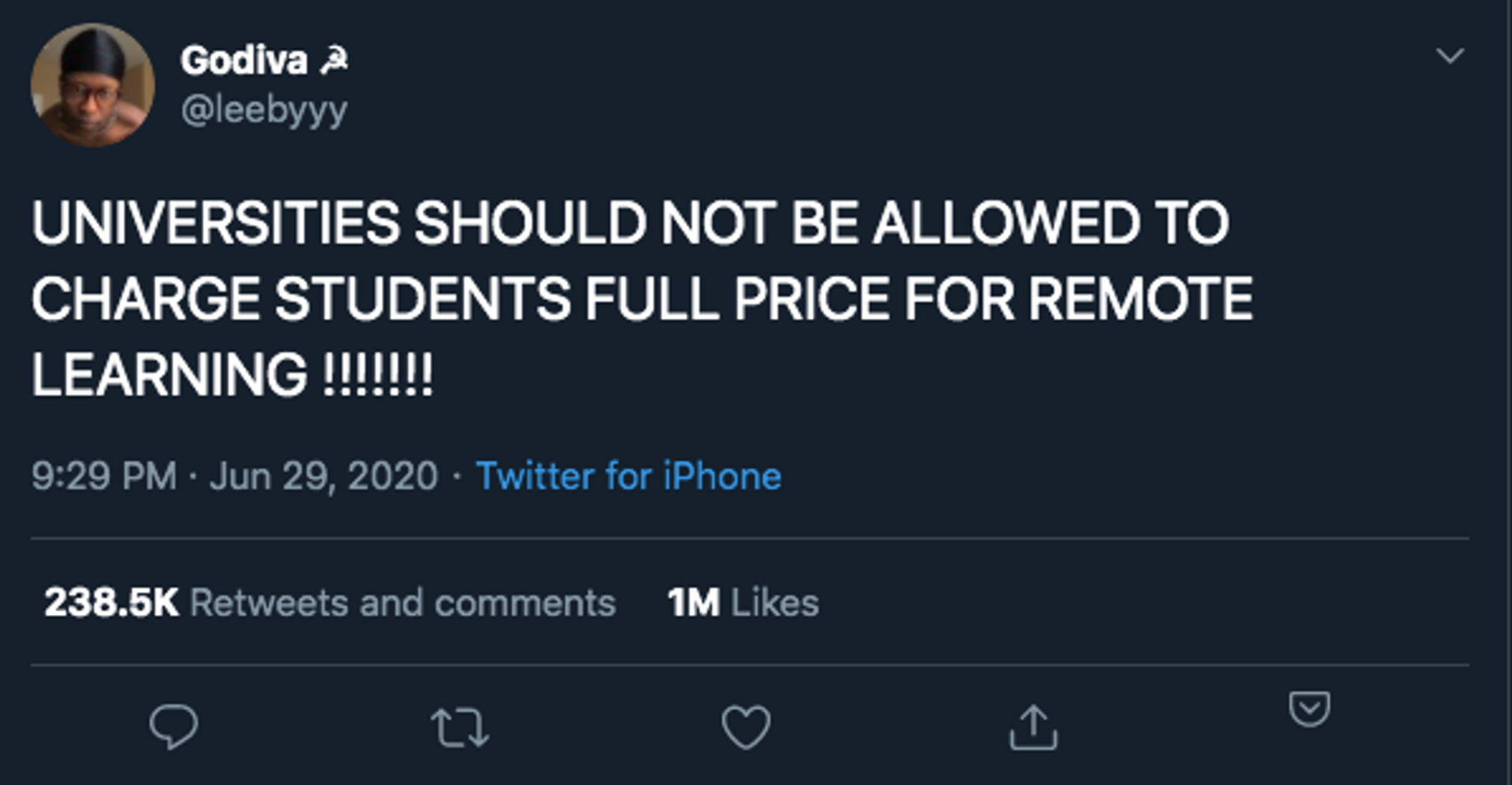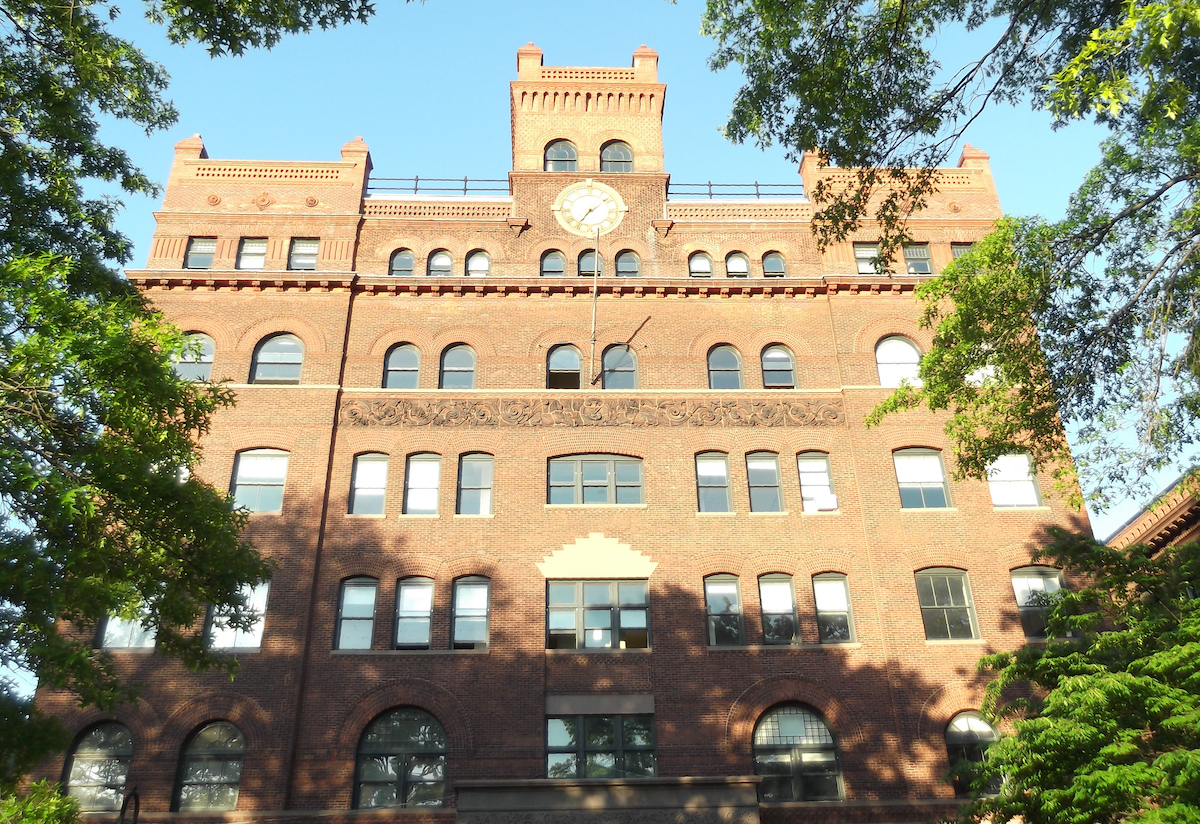Universities in the US are already facing challenges to bringing students and faculty back to campus for the autumn term this year due to Covid-19 concerns and restrictions, and art schools are grappling with unprecedented logistical challenges posed by the pandemic.
Many institutions will reopen in the fall with a hybrid online and in-person model geared to prioritise the needs of primarily studio-based MFA students. Yet administrators and students have concerns about the ongoing shifts in planning.
Carol Becker, the dean of Columbia University School of the Arts in New York, says the last several months “have not been an easy time for students, faculty nor those trying to facilitate the running of art-based programmes”.
Last week, Columbia’s president Lee Bollinger announced that all undergraduate classes will be held online to curb campus living due to severe restrictions imposed by coronavirus safety precautions. But the university will welcome graduate fine arts students back to their studios and other work facilities “as much as possible” in the fall semester but under strict health and safety guidelines, according to Becker. Most undergraduate classes, which are predominantly critique or theory-oriented, will continue to be held online. Students on campus will sign an agreement adhering to a set of safety protocols, and will be “expected to respect this contract or lose access to their studios and to the shops and labs”, Becker says.
She adds: “Part of what students have missed so much is the physical community of other students, as a great deal of graduate school in the arts is just this—meeting each other and collaborating with like-minded artists.”
Solitude in the studio
The effect of isolation is perhaps more noticeable within less solitary and more tactile art practices. Ceramicist and New York University (NYU) professor Linda Sormin says she has been teaching for 17 years and that the online learning model has been “both terrifying and interesting”. Her classes, where students typically work closely with one another in confined spaces, will have a cap of four rotating students who will be required to keep within strict spatial boundaries.
“Each student will be assigned a specific location in the classroom, and a group,” Sormin says. “People in these groups cannot change this semester so that Covid-19 contact tracing can be carried out, if needed.”
Sormin’s students will also be provided a personal ceramics tool-kit and other materials to allow them to be able to take clay work home to work on for longer periods of time. Some students will only participate remotely via Zoom, and ceramics assignments will be done in fired or unfired clay due to restricted access to NYU facilities. “There are many exciting contemporary artists working in raw clay—and we’ll be addressing these approaches, as well as fired work, in classes,” Sormin adds.
From online to outdoors
Other schools are moving instruction en plein air as much as possible. The Rhode Island School of Design (Risd) is also planning to reopen in a hybrid format. More than 200 shops, studios and classrooms have been reconfigured to provide for social distancing guidelines, and seven exterior spaces have also been tented to provide additional classroom space for the months of September and October.
“All efforts have been made to preserve as much in-person instruction as possible, with priority given to our shop- and materials-based studio experience,” says Rosanne Somerson, the Risd president. Courses will begin classes online on 10 September and in-person on 17 September to allow a “phased timing allowing for a two-week quarantine for students upon arrival to campus”, according to Somerson.
Some schools, however, are erring on the side of caution by holding all classes remotely. While the decision to do so might limit the spread of the virus, it may also limit the quality of the classes.
“It is a moment of seismic change”Jane South, chair of the department of fine arts at Pratt Institute
Tracie Costantino, the provost of the California Institute of the Arts (CalArts) in Santa Clarita, California, says the biggest challenge to the online model is the “lack of access to studios and facilities, as every student has different living situations”, but an advantage is the “expanded access to visiting artists, as travel is no longer an obstacle”.
Jane South, the chair of the department of fine arts at the Pratt Institute in Brooklyn, which will operate a hybrid curriculum in the fall semester, says that “it is a moment of seismic change” and that studio critiques, a major component of graduate visual arts programmes, have no choice but to adapt to the new reality.
“Critique moments throughout the year usually involve large groups of faculty and students meeting in the same space, but clearly we cannot do this in today’s environment,” South says.
Instead, Pratt will implement a system where students will set up their work one or two weeks before the critique so that others can visit their work on their own time. On the day of the critique, the student whose work is being critiqued will be physically present in their own workspace with an interlocutor, while everyone else contributes to the conversation via Zoom.
“It’s possible that, when the actual conversation happens, it will be much more meaningful and nuanced”, South says. This model “also benefits the interdisciplinary focus we have at Pratt as it allows for students who work in time-based media to have their work viewed, as time constraints often mean these students can only show a clip of their work to the critique group”.
Digital versus dollars
However, students remain skeptical that the universities can deliver an adequate virtual programme given how much they are spending on tuition—especially since most art programmes average around $42,000 a year and nearly a third of the priciest 25 universities in the US are art schools, according to the US Department of Education.

via Twitter
This week, students of New York’s School of Visual Arts (SVA), which will conduct the fall semester fully online, launched a petition to express their concerns about the 2020-21 academic year. Students claim the university withheld their decision to hold the fall semester online until after the tuition deadline “stripped students of their ability to make informed decisions on their plans” on whether or not to attend the semester. As a result, students are requesting a 30% tuition reduction and reductions on the spring semester based on future conditions, as well as more flexible payment plans and scholarship preservation.
SVA did not respond to a request for comment regarding the petition by the time of publication of this article.
Earlier in the summer, students at the University of the Arts in Philadelphia have started a petition to fight a $1,670 increase in tuition this year as most classes remain remote. “Universities should not be allowed to charge students full price for remote learning!” tweeted Khalib Owen, a junior at the school; the tweet soon received a million likes.
Earlier this year, MFA candidates of several prestigious universities—including Boston University and the Savannah College of Art and Design—demanded full or partial reimbursement of their tuition, arguing that studio classes and workshops, which were held via Zoom meetings last semester, were insufficient.
“We understand that SVA is working overtime to radically adapt to the current public health crisis,” the SVA students write. “However the communications from SVA administration, since May 8th, 2020 up until today, August 17th, have raised many questions and anxieties across the SVA student body.”


